
6 Post-Purchase Emails That Convert And Retain
The customer journey doesn’t end after they click the checkout button. Learn how to maximize your post-purchase flow to boost conversions.
Post-purchase emails are the Harry Potter of email marketing. Often neglected, given scant attention, and forced to live in a cupboard under the staircase of digital marketing.
And yet, like the magical boy with the scarred forehead, post-purchase emails are incredibly powerful.
You might not be worried about post-purchase emails because you’re getting new customers at lightning speed. Great! You have a good customer acquisition strategy. But what’s the point if those customers don’t come back? There is only a 5-20% chance of a new consumer buying from you, whereas loyal customers are five times more likely to repurchase.
The good news is that post-purchase emails and follow-ups have a significantly higher open rate than standard promotional emails. Post-purchase emails have a 40.5% open rate. Meanwhile, common marketing emails only reach half this number, with an average open rate of 20.94%.
Despite these statistics and the fact that it is seven times more expensive to acquire a new customer than to retain customer relationships, many companies send a receipt and little else. This is unbelievable, and misses out on a huge opportunity to increase customer retention rates and convert new buyers into recurring customers.
In this article, we’re going to outline the 6 post-purchase emails that will boost your conversions, nurture customers, and result in repeat sales.
1. Order confirmation is the first post-purchase email
The first email should always be the confirmation of purchase. When people click “Buy”, they want to know that everything worked. That they didn’t just send money into the ether of the internet, never to hear from it again. Confirm that their order was received and that someone on the other end is doing something about it.
At the risk of stating the obvious, ecommerce involves significantly more trust than face-to-face transactions. A customer is handing you their credit card number with the assumption that you’ll hold up your end of the bargain. They want assurance that you’re not operating a scam out of an internet cafe in Nigeria.
An order confirmation should be sent as soon as the payment clears, letting the customer know:
- That their order went through.
- When it will ship and how to track their shipment.
- How they can access their receipt.
- Who to contact if there’s a problem.
- What they should expect next.
As soon as you order from Crocs, you get something like this:

Crocs makes it clear that your order was successful and gives you a way to double-check the information. They also provide the customer the option to cancel their order early on in the post-purchase process. Further down the email, there is a link leading to FAQ’s and customer support. They leave little room for questions or doubts and prepare the customer for other follow-up emails.
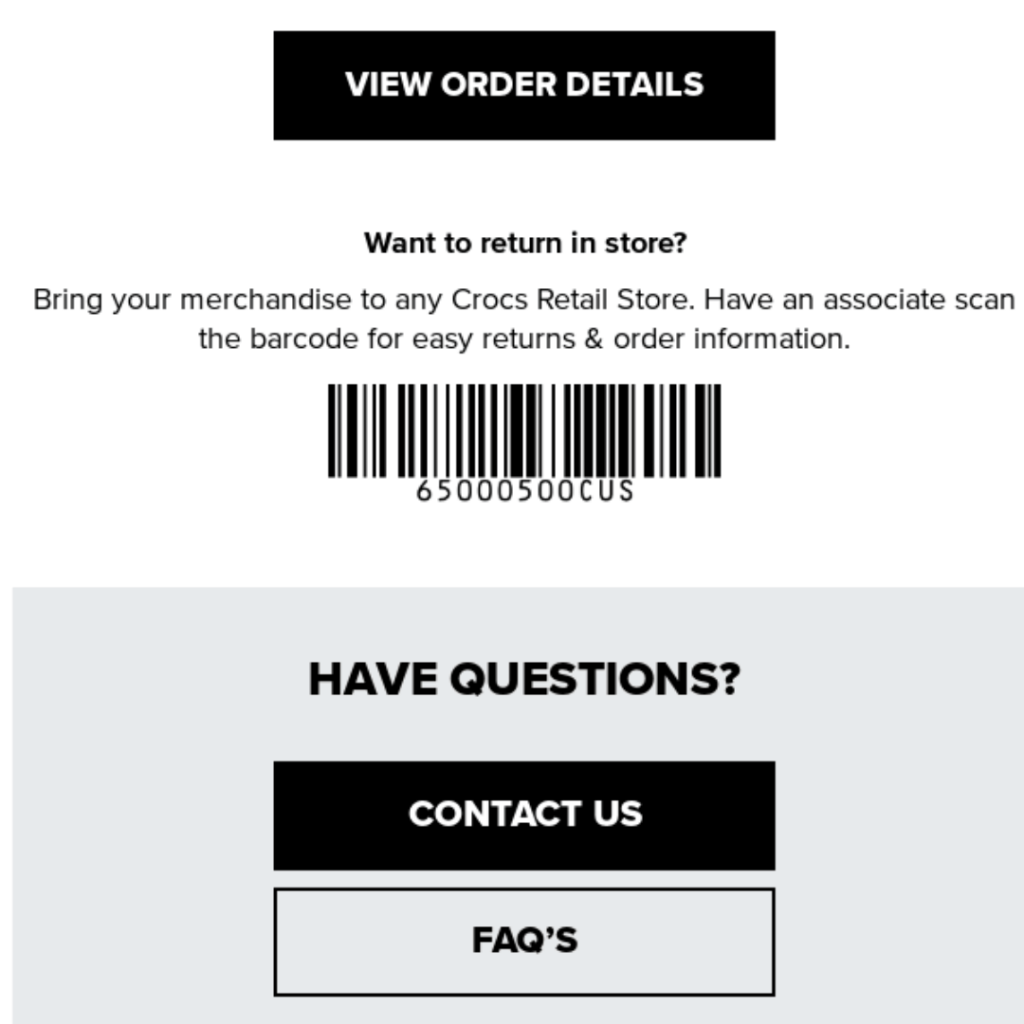
You can use the order confirmation email for upselling or cross-selling, but you need to be careful about this. If you launch into product pitches too quickly, you can sacrifice trust and come across as only caring about revenue. Tact is the name of the game in the confirmation email.
Whether you cross-sell or not, your primary goal in the confirmation email is assurance. You want your customers to have assurance that everything is working as it should. Setting the expectations of the customer, as ProFlowers does, can be an outstanding way of building trust.
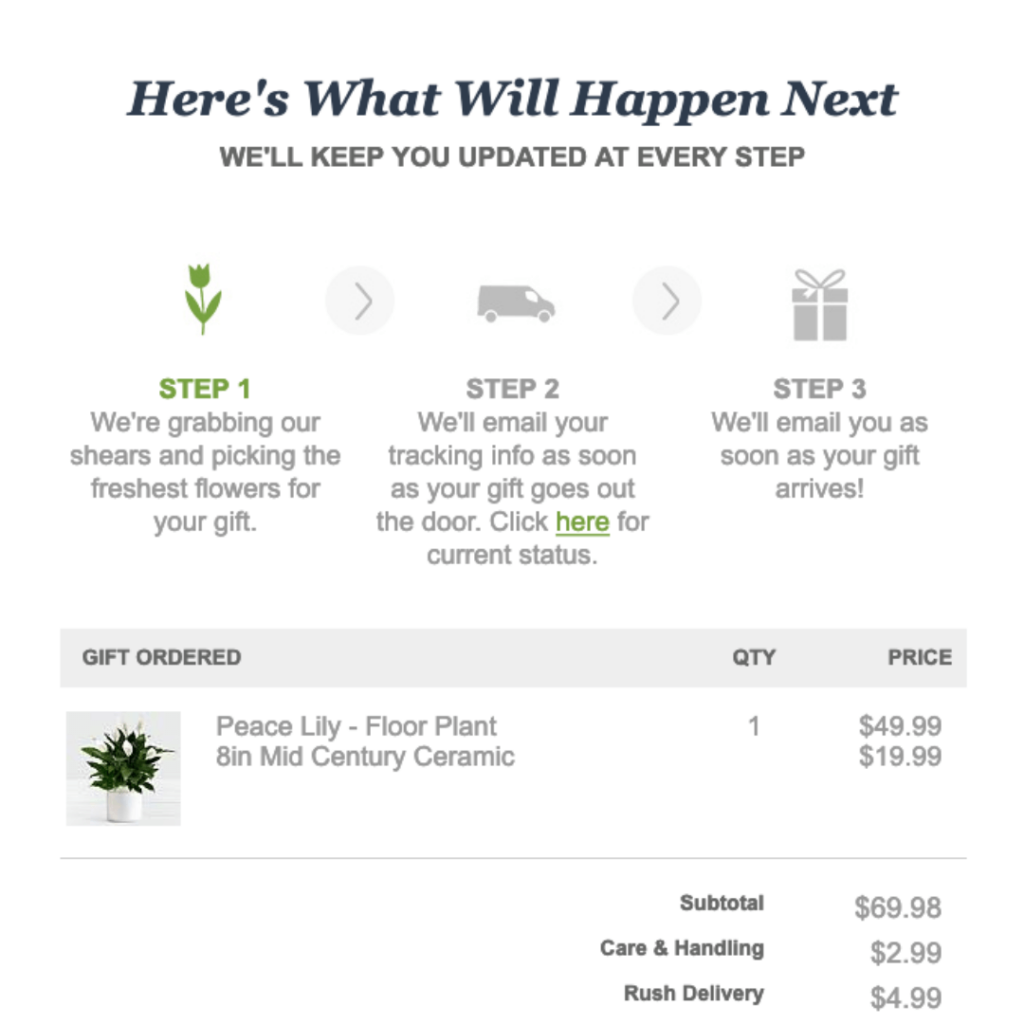
2. Follow up with a shipping confirmation
The shipping confirmation email allows you to update the customer on the status of their order, continue to build trust with them and nurture your relationship with them.
When Fitbit sends a shipping confirmation email, they use it as an opportunity to insert humor and personality:
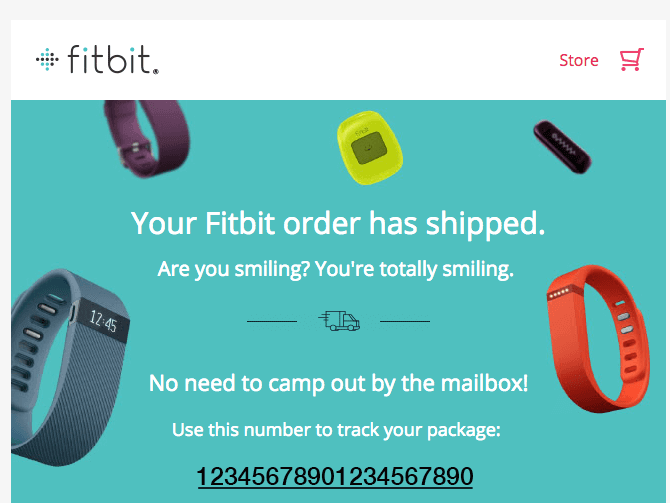
They also use the email to remind the customer of how they can continue to track the progress of the order, ensuring they don’t become worried about the order being lost.
This confirmation email from Adidas is extensive and provides excellent information for the customers:
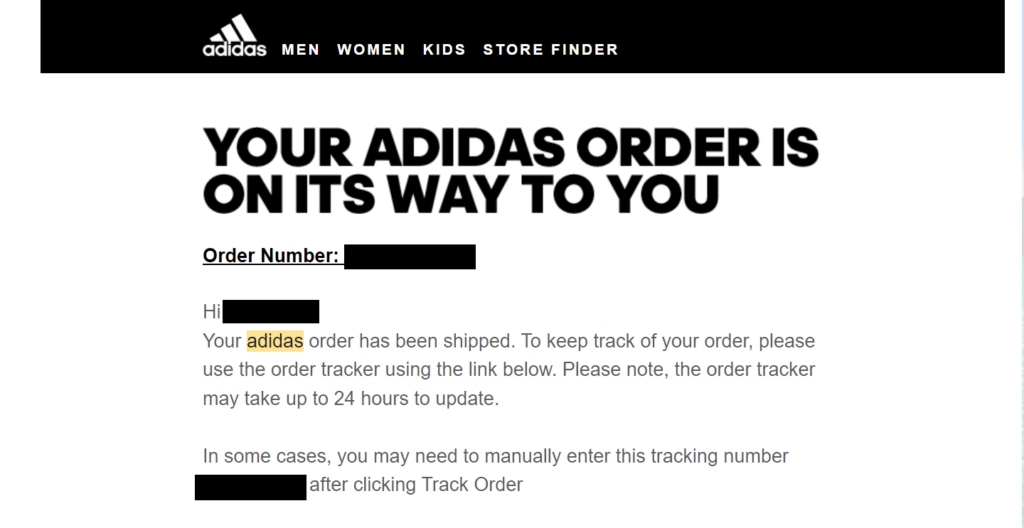
The shipping confirmation order is also an opportunity to provide advice before the product arrives.
The email also includes the following:
- A way to contact the customer service team
- Links to important information such as returns & refunds, FAQs, delivery time, and payment
- A recommended section to promote other items
- A CTA to download the app
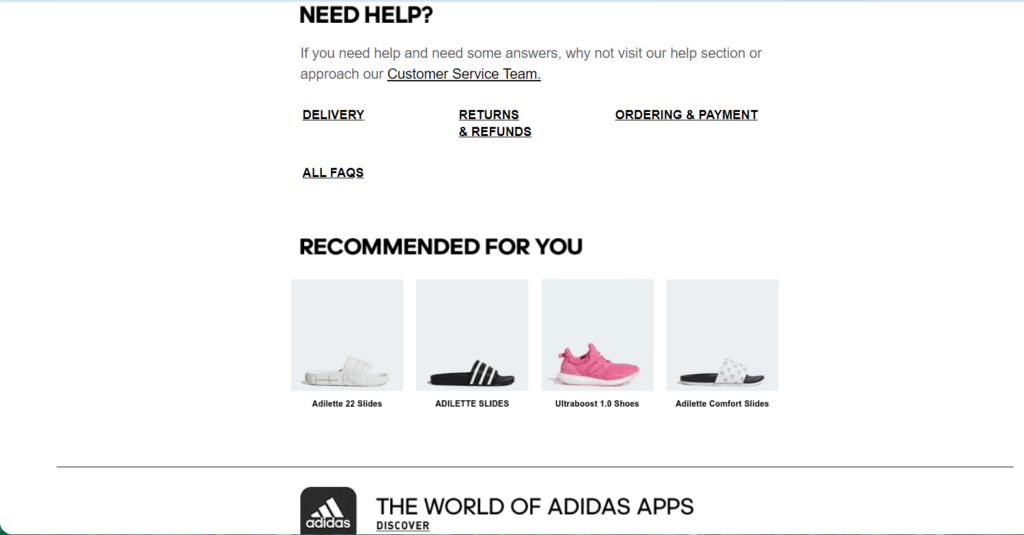
Similar to the order confirmation email, the shipment email is intended to nurture customers to the point where they implicitly trust you. You want them to know that you’ve got their back and that if there are problems, you will handle them.
3. Check in on the shipment in your third post-purchase email
Approximately one week after their shipment should have arrived, you want to check in to make sure everything arrived when it should and how it should. Ask questions like:
- Did it arrive on time?
- Did it arrive in good shape?
- Did you have any issues after it got there?
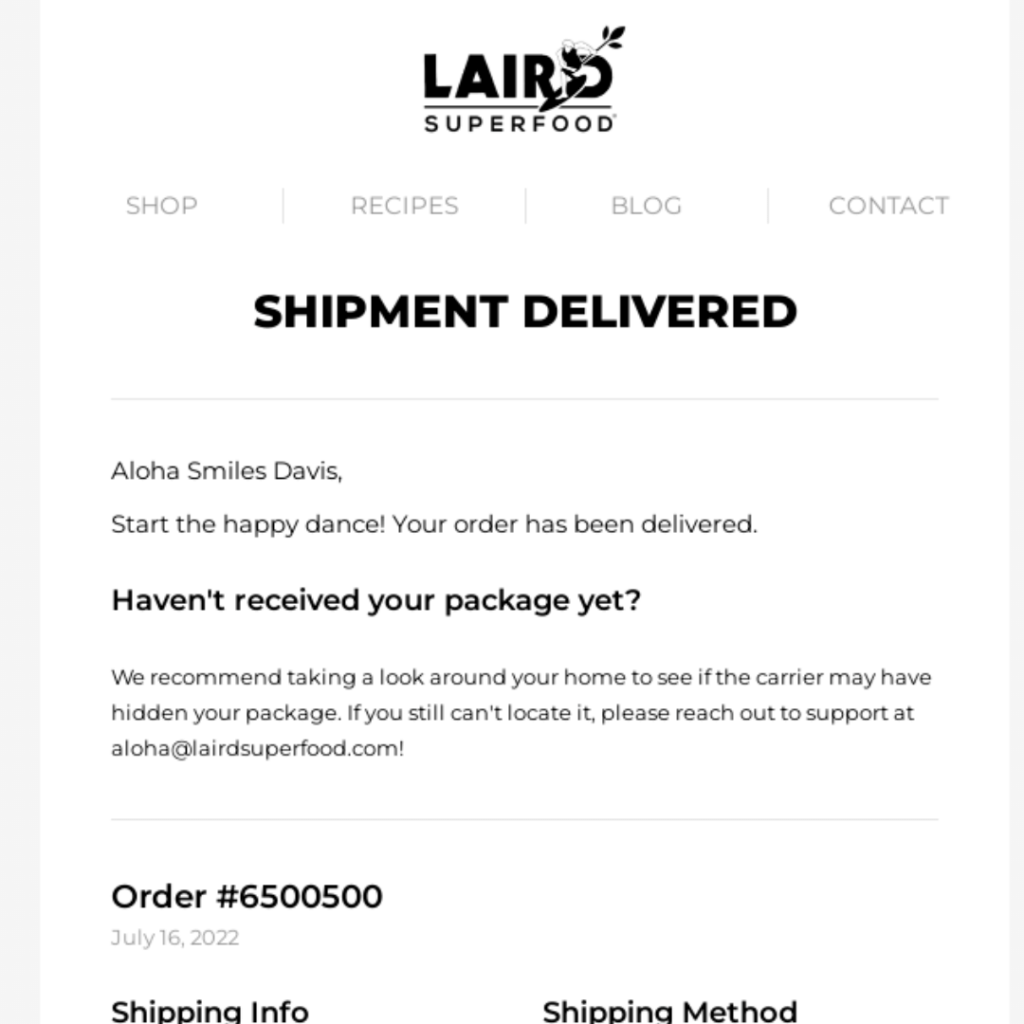
Take this example from Laird Superfood’s post-purchase flow. They inform the customer when their order has been successfully delivered and confirm if the customer did receive the package. They insert a bit of humor in the message, but ultimately, they provide a way to contact customer support so that customers can share their concerns if there are any real problems.
We’ve all had packages arrive late, banged up, and even containing the wrong item. We’ve also experienced the annoyance of trying to get an unresponsive company to fix the problem. It’s incredibly frustrating and almost guarantees that we’ll never do business with them again.
This email doesn’t need to be particularly complex. It should simply say, “We really value you and wanted to make sure everything was okay.” If there was a problem, you want to be proactive in resolving it.
A Guide to Email Marketing For Ecommerce Businesses
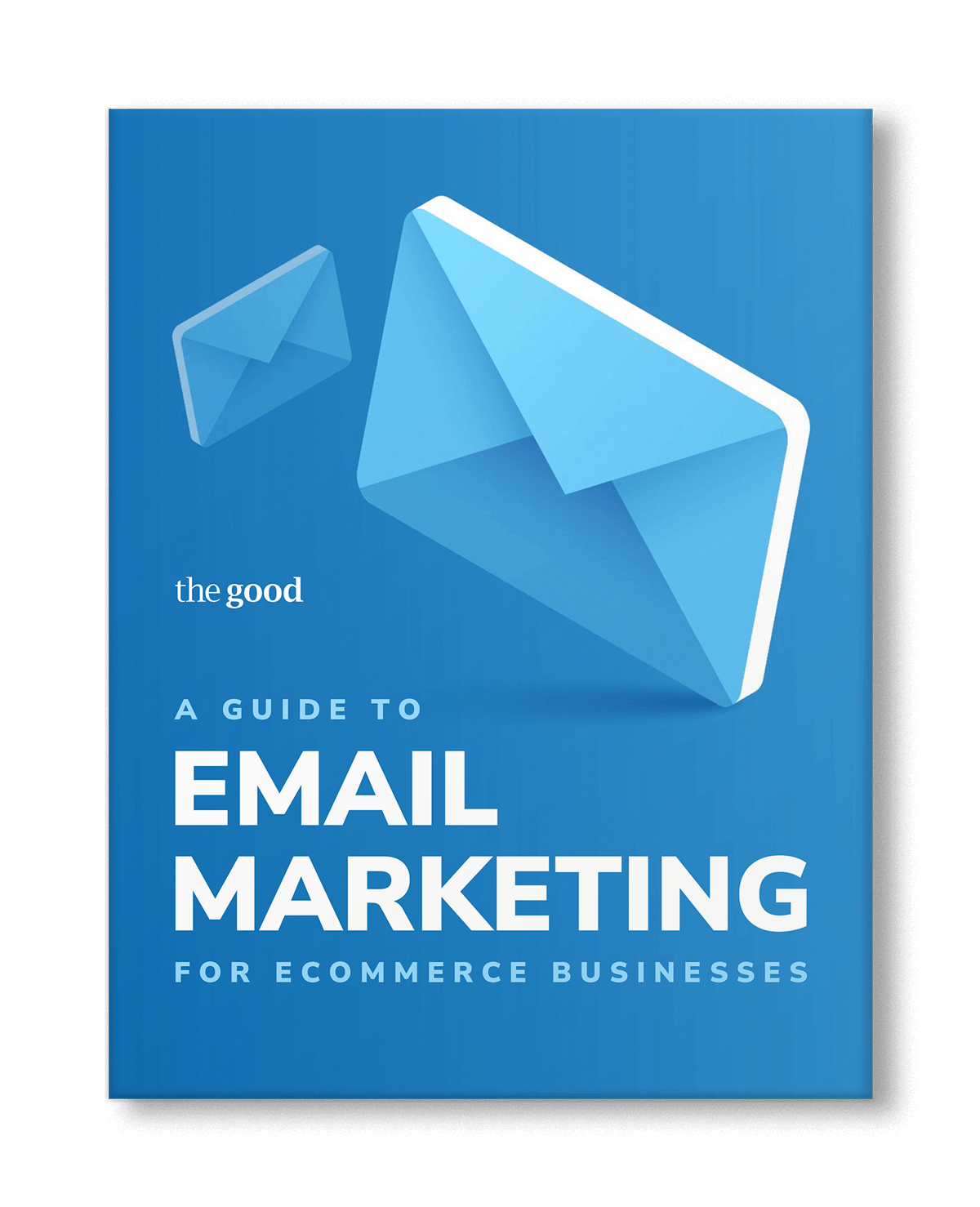
4. Request a review in the fourth email
When you are researching an item online, what’s the first thing you do? You look at the reviews. You want to know whether the product is good or will fall apart two months after your purchase.
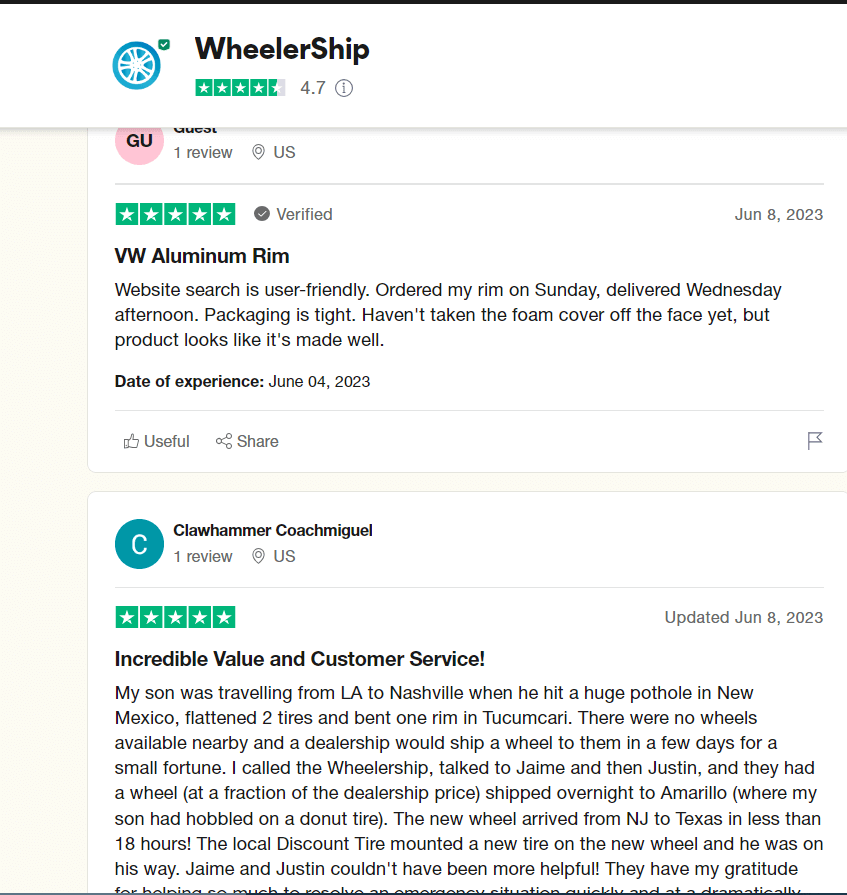
Positive reviews can lead to more sales, while negative reviews can kill a product.
Reviews can also give insight into ways you can better serve your customers. If a customer leaves a poor review, it gives you the opportunity to fix the problem and keep the customer from becoming angry.
A review request email asks the customer to leave a review of the product or to rate the experience they had with you. To show your appreciation, you can offer them a gift or store credit. This will not only strengthen the trust and positive relationship, but it will also encourage them to come back for future transactions.
This email from Hollister is a perfect example of a request review. They offer customers a chance to win $100 in store credit in exchange for the review and already included a CTA button that the customer has to click, making the process very enticing, straightforward, and clear for the customer.
Ideally, this email should be sent after enough time has elapsed for them to try the product for a few weeks.
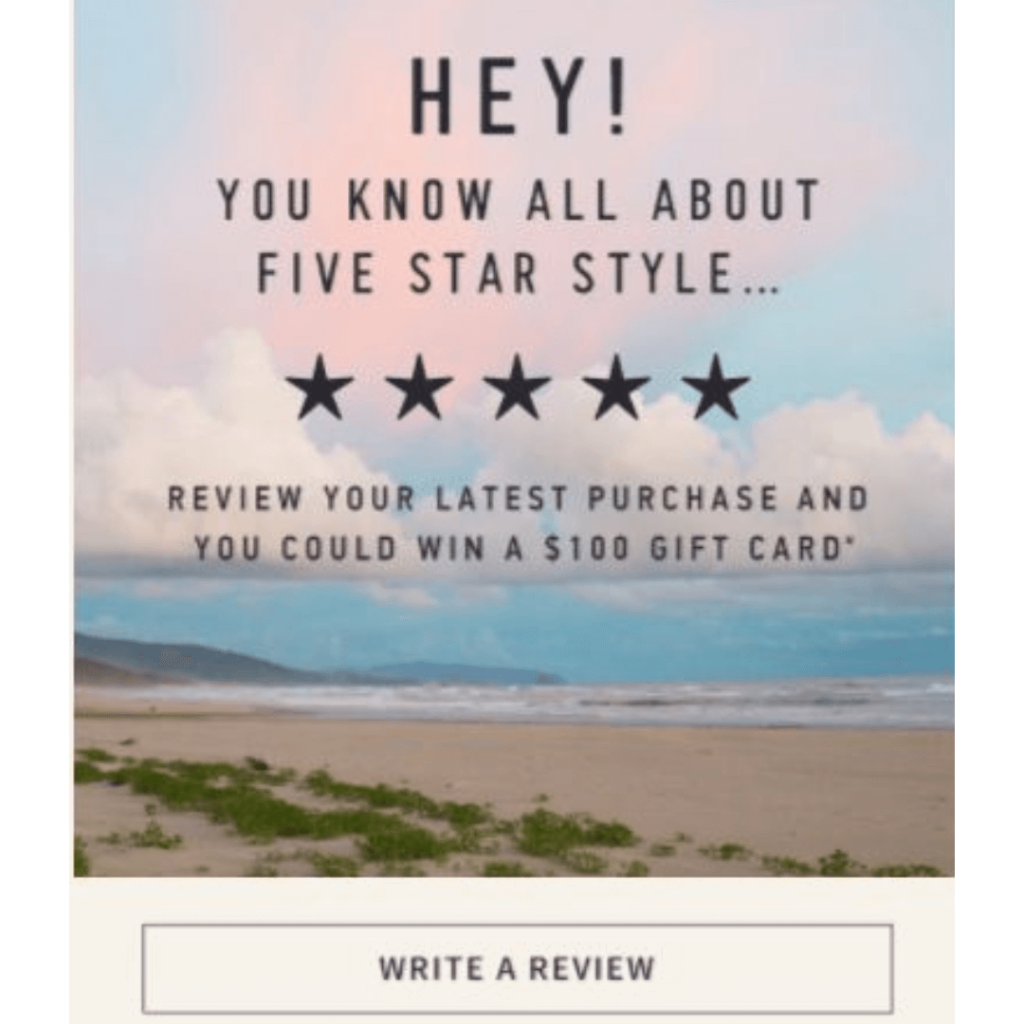
The review email can also include:
- A reminder to customers about the great product or experience you provided, usually using an image.
- Honest and upfront information about how long the survey will take.
- A description of how the review or results of the survey will benefit the customer.
When asking for a review, do everything possible to minimize the number of clicks necessary. As Chris Hexton says:
“Clicks-to-wow” is a way of describing the number of clicks a customer takes from their first interaction with your email to the moment they achieve the goal or hit the “wow” moment. In most cases, reducing the “clicks-to-wow” will increase conversions.
Link to the exact page where the review is entered to minimize the number of clicks.
User-generated content is a great way to attract new customers and build more trust with existing ones.
Don’t be shy to ask your customers to show you some love on social media if they are happy with their purchase. Gathering customer reviews in a feedback request email can help you glean insights about customer behavior and preferences, but having customers promoting your marketing campaigns.
Think of this as yet another check-in email. If a customer didn’t like your product, you want to know why so you can fix the problem. If you don’t fix the problem, you’ll lose the customer and potentially lose more customers over the same problem.
5. Make a post-purchase offer or replenish reminder in your fifth email
Your fifth email should be a post-purchase offer to promote items that complement or upgrade the item that the customer ordered. If the items are food, health supplements, or necessities, you can even send a reminder to the customer to replenish their stock after a certain period of time.
Think about it. They already purchased the product, and assuming the review results were positive, you know they liked it. This is the perfect opportunity to get them to re-order the product or purchase a similar product.
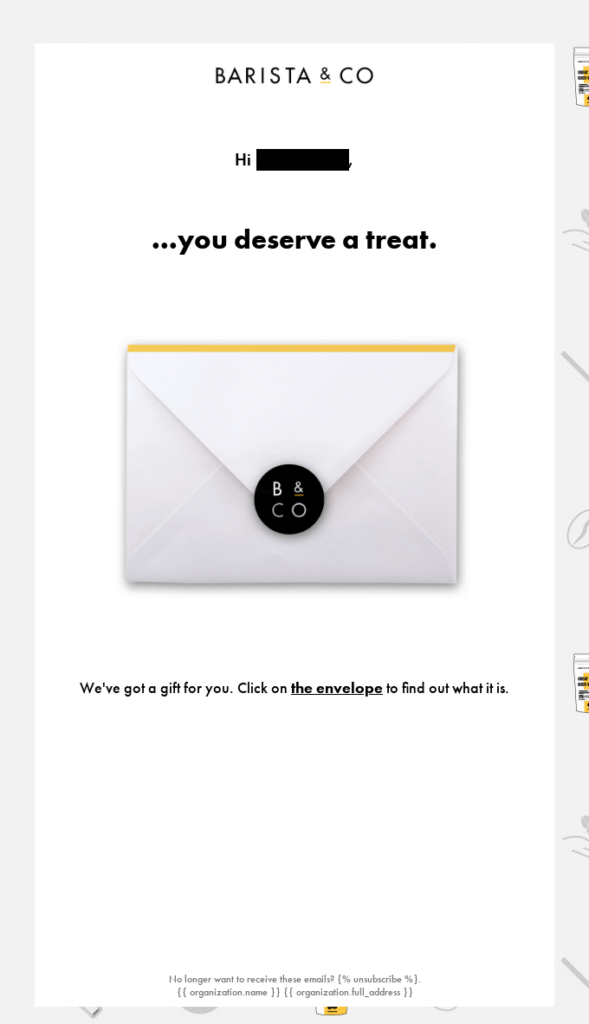
The conversion opportunities here are huge. A 5% increase in customer retention can also increase the profits of your company by 25-95%. Additionally, existing customers are more likely to test new products and spend 31% more than new customers.
You’ve already spent the money to acquire a new customer. You could spend the same time and effort to acquire another new customer or much less time and money to keep the same one.
This fifth email is crucial for customer retention. When a customer re-orders, they become that goldmine that is the repeat customer.
No time to read?
Get the highlights in 6 minutes.
6. Encourage customers to join a loyalty program
To further convince your customers to buy from you again, you can include relevant content, such as a loyalty or rewards program, that will entice them to make future purchases.
By including information about the rewards you offer in your post-purchase flow, you can encourage customer loyalty, boost sales and improve customer satisfaction. Loyalty programs are key in building long-term relationships with your customers.
In fact, according to Forbes, adding a loyalty program to an ecommerce platform can increase average order value by 319%!
Starbucks has a very effective rewards program that encourages people to buy more drinks in exchange for stars, eventually allowing them to redeem free coffee or food – and who doesn’t want that? They make sure to include a comprehensive list of benefits in their email to further encourage frequent customers to take part in the loyalty program.
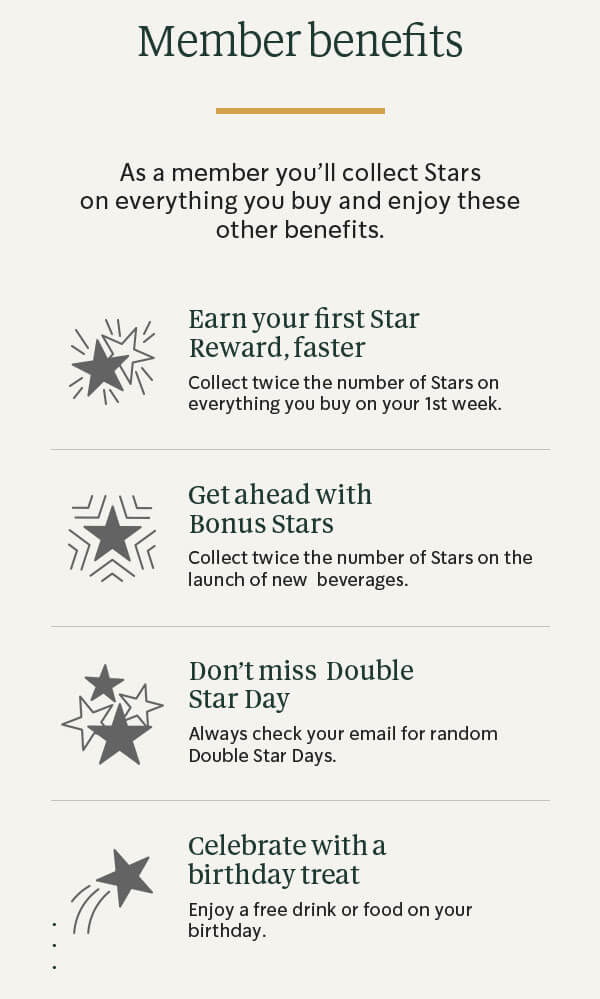
Don’t Waste Post-Purchase Emails
A post-purchase email sequence is a terrible thing to waste. You have a unique opportunity to convert a new customer into a recurring customer, and once that opportunity passes, you have to work doubly hard to get it again.
These email sequences aren’t particularly difficult to create. Most email marketing services, such as Klaviyo or MailChimp, can accommodate them. It simply takes a little bit of time and creativity.
Post-purchase emails are hugely underrated and can become one of the most powerful tools in your digital marketing toolbox. They can increase your revenue, boost your customer engagement, and actually reduce overall marketing expenses.
Isn’t it time to stop giving them the Harry Potter treatment?
Enjoying this article?
Subscribe to our newsletter, Good Question, to get insights like this sent straight to your inbox every week.

About the Author
Jon MacDonald
Jon MacDonald is founder and President of The Good, a digital experience optimization firm that has achieved results for some of the largest companies including Adobe, Nike, Xerox, Verizon, Intel and more. Jon regularly contributes to publications like Entrepreneur and Inc.